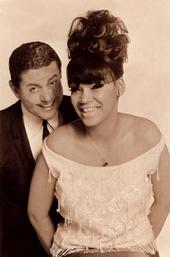Visit us @ lalupedocumentary.com
Synopsis:
A born rebel and innovator, Lupe Yoli aka La Lupe or La Yiyiyi was renowned for her emotional performances. Her renditions of classics such as “My Way,†“Fever†and “Going Out of My Head†were known worldwide. But beyond her musicianship, celebrity and scandal, Lupe Yoli was also a single mother of two, a survivor of domestic abuse, a Santera who later became a Christian Evangelist speaker.
Shot in New York City, Miami, La Habana and San Juan, this documentary evokes two groundbreaking cultural periods through rare archival footage -- pre-Revolutionary 1950’s La Habana and the burgeoning Latin music scene in New York City in the 1960’s and 1970’s. The documentary begins with her funeral in 1992, attended by fans, family and the whole of New York’s Latino music aristocracy and follows her from poverty to celebrity and back again.
La Lupe Queen of Latin Soul tells La Lupe’s story through character driven interviews in first person anecdotes, in an oral history much like those found in a folk ballad or a bolero. She was born in a small rural town in Cuba in 1936, one that La Lupe herself loved to describe as “so poor that no one knew it existed until I got famousâ€.
Her older sister Norma Yoli describes her as “just another black girl from Santiagoâ€, one who loved to imitating the singers she heard on the radio. One of these was Olga Guillot, Cuba’s reigning bolero singer – our Latin Frank Sinatra. When the rebellious teenage Lupe wins a radio contest, much like our present day’s American Idol, she gets to meet Olga Guillot in La Habana and to sing on the radio.
By 1957 La Lupe was the rage in the thriving competitive nightlife in La Habana. Rare archival footage showcases Lupe’s peers – Perez Prado, Beni More with Mongo Santamaria, a young Celia Cruz. Helio Orovio, the noted Cuban musicologists describes La Habana in the late 50’s as having the most “intense†nightlife in the midst of the onset of Cuba’s revolution.
Lupe’s gay following adores her, and the avant-garde follows. A newspaper headline appears: “La Lupe Divides Cuba in Twoâ€. While her inimitable style is described as one befitting the revolutionary times, the headline was a prescient one: like many artists at the time, she leaves Cuba:
“there was no room in Cuba for me and the revolution.â€
